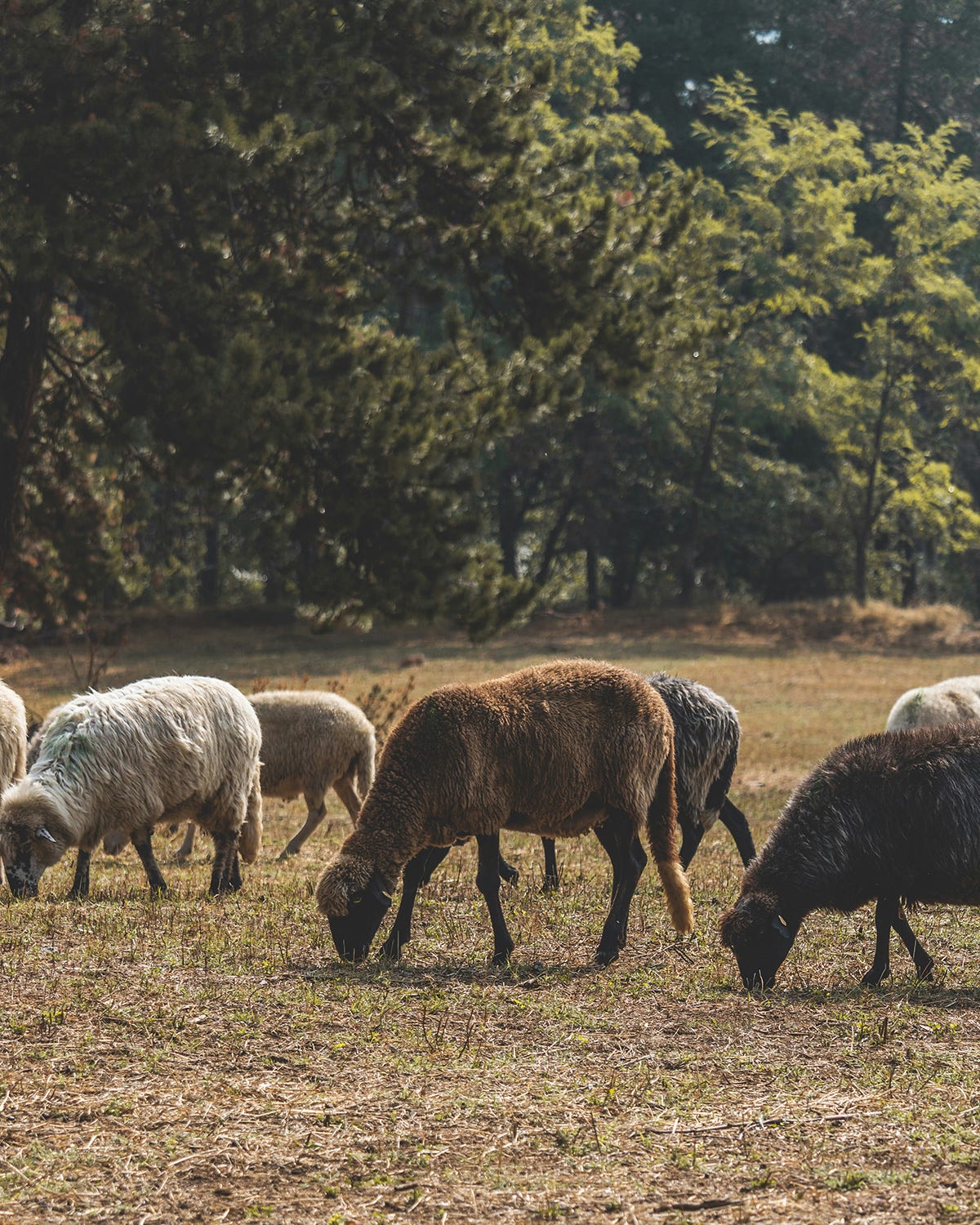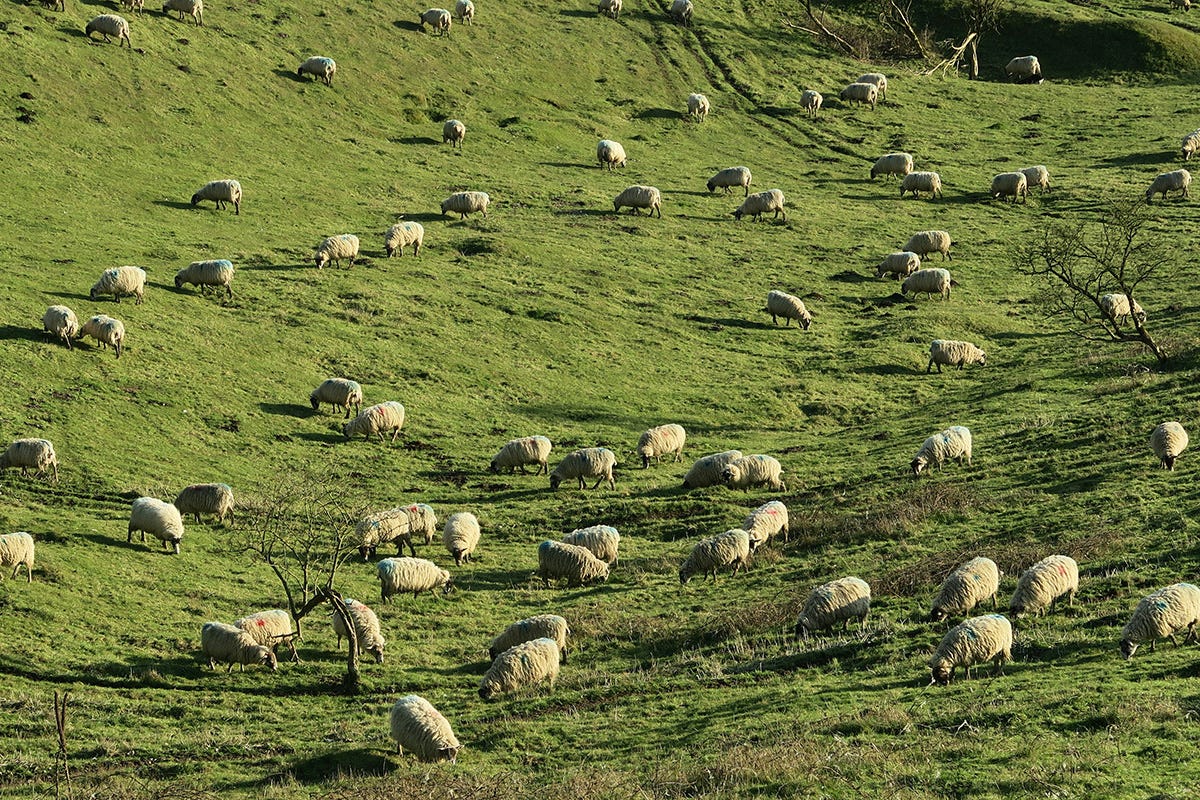Will Incoming Sustainability Legislation Favour Polluting Synthetics over Natural Wool?
Current proposals for the EU Product Environmental Footprint and Ecobalyse are overlooking the regenerative possibilities of a fibre that has kept us warm, clothed and beautiful for millennia.
Bergstrand Consultancy is always on the lookout for ways to help brands stay ahead of the sustainability curve. As part of that mission, we’d like to introduce you to one of our key initiatives: the Good Wool Collective. Through the Good Wool Collective, we explore the game-changing potential of wool in the evolving regulatory landscape of textiles.
Wool: A Natural Ally in the Fight for Sustainability 🐑
At Bergstrand Consultancy, we believe wool is the unsung hero of sustainable materials. While many are chasing the latest innovations in textile production, wool continues to quietly offer solutions rooted in nature. It’s more than just another fibre—it has untapped potential to drive significant change in the industry. When managed responsibly, wool can play a key role in shaping a textile future that benefits both people and the planet.
Consider this: while the textile world is often fixated on innovations to reduce plastic pollution, wool has been addressing these issues for centuries. Naturally renewable, durable, and biodegradable, wool stands apart from synthetic fibres, which contribute to microplastic pollution. Wool garments have a long lifecycle, requiring less frequent replacement, and when they do eventually break down, they return to the Earth without leaving behind toxic residues.
What makes wool even more remarkable is the way it can be farmed. When wool is produced through regenerative agricultural practices, sheep not only contribute to the natural fibre cycle but can also help sequester carbon, reducing overall emissions. This creates a system where nature itself is a solution to climate challenges, transforming the sheep-grazed landscape into a carbon sink.
But as wool’s potential continues to unfold, the industry must navigate increasingly complex sustainability regulations, such as the European Commission’s Product Environmental Footprint (PEF) and this is where things get tricky.
The Challenge of the Product Environmental Footprint (PEF) 🌍
The PEF framework, created by the European Commission, aims to standardise how we measure the environmental impact of products across their life cycle, using a scoring system based on multiple environmental indicators. At first glance, this seems like a positive step for sustainability. But the issue lies in how PEF scores natural fibres like wool.
In the current PEF methodology, set to be adopted in 2025 as part of the Green Claims Directive, natural fibres are being penalised with lower scores compared to synthetic alternatives. This is because PEF currently overlooks key environmental impacts such as microplastic pollution, the full ecological costs of crude oil formation, biodegradability, sustainable production practices, and more. The environmental impact of natural fibres like wool is assessed across the entire supply chain—covering everything from greenhouse gas emissions produced by sheep to land and water use. By contrast, synthetic fibres benefit from a narrower assessment that begins only at the extraction phase (from the wellhead), excluding the broader impacts of raw material formation.
For brands looking to embrace wool as part of their sustainability journey, these challenges around the PEF framework might seem daunting. At Bergstrand Consultancy, we’re following these developments closely. Organisations such as Make the Label Count are tirelessly campaigning to ensure the beneficial properties of natural fibres such as wool—biodegradability, renewability, and circularity—are properly recognised in new frameworks like PEF. Many in the industry are actively pushing for these changes, and together, we’re working toward creating a fairer, more accurate way to measure wool's true environmental impact.
Ecobalyse: Another Step Forward, But Still Work to Do 🇫🇷
Ecobalyse is a French platform that builds on the PEF framework but makes key adjustments to better reflect the sustainability realities of natural fibres in the French market. The goal is simple: make it easier for consumers to choose eco-friendly options and encourage brands to create more sustainable products. However, despite some improvements on PEF, wool and other natural fibres are still struggling to get the recognition they deserve within this system.
The hope was that Ecobalyse would incorporate physical durability as a key factor, recognizing the lower environmental impact of long-lasting fibres like wool. However, recent updates suggest this aspect has been removed. Ecobalyse’s current 'durability coefficient' now considers factors such as the size of collections, the cost of repair versus replacement, and how long a product remains at full price—brand-level metrics that do not reflect the actual lifespan or robustness of the fibre itself. In contrast, the PEF framework still accounts for product-level physical (intrinsic) durability, which can be challenging for wool due to its natural variability but generally favours synthetic materials for their uniformity. Wool’s real strength, however, lies in its 'emotional durability'—its lasting appeal and value, leading to longer use and less frequent replacement. This remains an area of active discussion, and further refinement is needed to ensure frameworks like Ecobalyse capture the true sustainability benefits of wool.
These gaps in Ecobalyse and PEF are a reminder of how crucial it is for brands to stay informed and involved in the ongoing evolution of sustainability frameworks. As regulations evolve, we hope that the advocacy for wool will ensure that its strengths aren’t overlooked.
What’s Next for Wool in the Fashion and Textile Industries?
We’re on the cusp of a major transformation in how wool is valued by the fashion and textile industries—and by consumers. As brands prepare for the challenges and opportunities that lie ahead, staying informed and connected is more important than ever.
This is where the Good Wool Collective comes in. Whether you’re already working with wool or looking to diversify your material portfolio, we offer direct access to a global network of wool experts, insightful talks every two months, and tactical workshops on how to transition to more sustainable wool sources.
Upcoming sessions include deep dives into topics like:
Regenerative Agriculture in Action
Methane and Wool: Impacts and Solutions
Understanding GHG Protocols, Land Sector and Removals Guidance
These sessions are designed to provide you with practical knowledge and actionable strategies to help your brand stay ahead of the curve as wool’s role in apparel continues to evolve.
Join Good Wool Collective
On September 24th, we’ll be hosting our first session where we’ll explore wool’s carbon footprint and the evolving regulatory landscape. This is an exclusive opportunity for members of Good Wool Collective, and we’d love for you to join us.
Brands like Toteme, Marc O’Polo, and Helly Hansen are already part of the Good Wool Collective, benefitting from our combined efforts to stay ahead in the sustainability race.
To secure your spot in the Good Wool Collective and begin tapping into the power of wool for a sustainable future, sign up at www.goodwool.org.
If you are not a brand but are still interested in getting information about the content of our sessions and the latest in the world of wool for textile and apparel, please join the Good Wool Collective mailing list here.
What we’re reading this month
Microplastics found in human brains — Recent studies reveal microplastics, such as those shed by synthetic fibres, have been found in human brains, raising concerns over potential links to dementia and Alzheimer's.
Toxic Substances and Child Labor Discovered in Shein's Supply Chain — Shein faces mounting scandals as reports uncover toxic chemicals in products and child labor violations, all while seeking a London Stock Exchange listing
Lower Temperatures Can Help Reduce the Environmental Footprint of Washing — New study reveals washing clothes at lower temperatures and shorter cycles can extend their lifespan by 50%
Dior Faces Criticism for Outdated Compliance with UK Modern Slavery Act — Outdated disclosures raise concerns about Dior’s efforts to address forced labour and uphold ethical supply chain practices
Less than half fashion brands set reduction goals on CO2 emissions — Less than half of the top 250 global fashion brands have verified CO2 reduction targets, with significant Scope 3 emissions and a lack of transparency in the $1.9 trillion industry.




